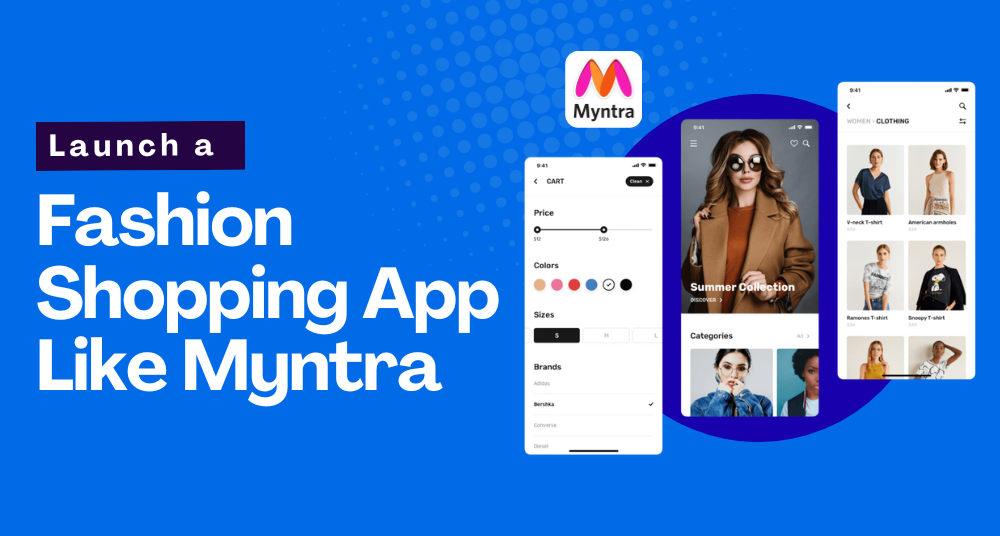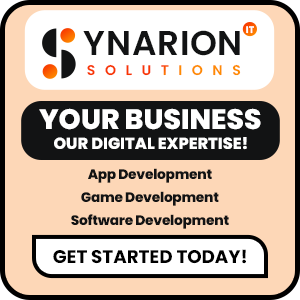Building a fashion shopping app in today’s saturated market requires more than just a digital storefront. It demands a sophisticated, user-centric ecosystem capable of handling immense scale and commanding brand loyalty. Myntra, with its impressive 100M+ downloads on the Google Play Store, stands as a testament to this philosophy. It’s not merely an app; it’s a cultural phenomenon, a digital hub where commerce, content, and celebrity converge.
This guide delves into the complete blueprint for building a market-leading fashion app, using Myntra’s success as our benchmark. We will explore the critical features, the technology that powers them, and the branding strategies that turn a simple app into a household name.
Phase 1: Strategic Blueprint & Market Authority
Before any code is written, a successful app needs a clear vision and an understanding of its place in the market. This phase is about strategic planning, branding, and defining your unique value proposition.
Finding Your Niche:
Myntra has grown into a general fashion powerhouse, but it didn’t start that way. To compete, you must identify a niche. Will you focus on sustainable fashion, luxury haute couture, streetwear, or a specific demographic like ethical workwear or plus-size clothing? A focused approach allows you to build a dedicated community and refine your brand identity before scaling.
Building a Brand with Celebrity Power:
A key differentiator for Myntra is its strategic use of high-profile brand ambassadors. These endorsements go beyond simple advertisements; they build a foundation of trust, aspirational value, and cultural relevance.
- Shah Rukh Khan: As a Bollywood megastar, his association with Myntra elevates the brand to a national scale, resonating with a vast, diverse audience. This strategy is about connecting with mainstream culture and establishing a sense of familiarity and authority.
- Masaba Gupta (for Myntra Home): By partnering with a celebrated designer like Masaba Gupta, Myntra signals its commitment to design, curation, and expanding beyond apparel into a complete lifestyle brand. This targeted partnership speaks directly to a design-conscious audience.
- Triptii Dimri & Virat Kohli: Tying the brand to contemporary youth icons and sports legends ensures relevance across generations and demographics. These endorsements position the brand as trendy, dynamic, and aspirational, crucial for capturing the younger market.
Your brand ambassador strategy should reflect your niche and target audience. The right partnerships can transform your app from a transactional platform into a lifestyle brand.
Phase 2: Architecting the Ultimate User Experience
A Myntra-like app thrives on a seamless, personalized, and engaging user experience. The features below are not optional—they are the core pillars of a successful platform that can handle over 100M users.
Onboarding and User Profile Management:
A smooth login/signup process is the first step. The user profile should be a personalized hub where users can manage their addresses, track orders, and view their purchase history.
Intelligent Search and Filtering:
With a vast product catalog, a powerful search engine is non-negotiable. It must include:
- Predictive Search: As a user types, the app should suggest relevant products and brands.
- Advanced Filters: Go beyond basic categories. Allow users to filter by occasion, style, fabric, and even celebrity-worn looks.
The Power of Personalization:
This is where AI and machine learning become your greatest assets. A sophisticated recommendation engine is what turns casual browsers into loyal customers.
- Collaborative Filtering: “Users who liked this also liked…”
- Content-Based Recommendations: Suggesting items based on a user’s past browsing history, wishlists, and purchase patterns. Myntra’s “Because you viewed…” feature is a prime example of this.
- Visual Search: Allow users to upload an image of an outfit and find similar products on your app.
Immersive Product Pages:
High-resolution images and videos are a must. Go a step further by including:
- 360-Degree Product Views: Allow users to inspect every angle of an item.
- Detailed Size Guides: Accurate size charts, including models’ measurements, dramatically reduce returns.
- User-Generated Content (UGC): Displaying photos and reviews from real customers builds authenticity and trust.
Seamless Checkout and Secure Payments:
The path to purchase must be frictionless.
- Secure Payment Gateway Integration: Partner with reliable services that offer multiple payment options: credit/debit cards, net banking, digital wallets, and UPI.
- Cash-on-Delivery (COD): An essential feature for markets where digital payments are still gaining traction.
Post-Purchase Engagement:
The user journey doesn’t end at checkout.
- Real-time Order Tracking: Provide clear, frequent updates on order status from processing to delivery.
- Hassle-Free Returns: A simple, easy-to-use return process is crucial for building customer confidence.
Phase 3: The Technology Stack for Scalability
To support a user base of 100M+, your app needs a robust and scalable architecture.
Frontend (User-facing app):
- iOS: Swift or Objective-C
- Android: Kotlin or Java
- Cross-Platform: Flutter or React Native are excellent for building an MVP quickly, but a native approach is often preferred for high-performance and a richer user experience at scale.
Backend (Server-side):
- Languages: Node.js, Python, or Ruby on Rails. Node.js is a popular choice for its asynchronous, event-driven nature, making it highly efficient for handling a large number of concurrent users.
- Database: A combination of a relational database (like PostgreSQL) for user and order data and a NoSQL database (like MongoDB) for the flexible product catalog is a common, effective strategy.
Cloud Infrastructure:
- AWS, Google Cloud, or Azure: To handle millions of users and transactions, you need a scalable cloud platform for hosting, database management, content delivery networks (CDNs), and analytics. These services ensure your app remains fast and responsive even during peak sale periods.
- Artificial Intelligence & Machine Learning:
- TensorFlow or PyTorch: These frameworks are essential for building the personalized recommendation engines, visual search, and other AI-driven features that define the user experience.
Phase 4: The Development Process and Costs
Building an app of this magnitude is a significant investment of time and capital.
Discovery & Planning (4-6 weeks):
This phase includes competitor analysis, feature prioritization, creating detailed wireframes, and defining the technology stack.
UI/UX Design (6-8 weeks):
A meticulously designed user interface and user experience are what set leading apps apart. This phase involves creating high-fidelity mockups and interactive prototypes.
Development (4-8 months):
This is the longest phase, where the frontend and backend are built in parallel. This process should follow an Agile methodology with regular sprints to ensure continuous feedback and development.
Quality Assurance & Testing (4-6 weeks)
Before launch, the app undergoes rigorous testing for performance, security, and usability. This ensures a bug-free experience for your users.
Post-Launch Maintenance
An app is a living product. Regular updates, security patches, bug fixes, and continuous feature additions are necessary to stay competitive and relevant.
The Cost:
The cost of building a full-featured app like Myntra can range from $50,000 to over $200,000, depending on the feature set, the development team’s location, and the complexity of the project. A basic MVP can be built for a lower cost, allowing you to test the market and attract early funding.
Conclusion
Achieving a scale of 100M+ downloads is not a matter of luck; it is a result of meticulous planning, smart technological choices, and a powerful brand strategy. By focusing on a user-first design, a scalable tech infrastructure, and a marketing strategy that leverages cultural trends and celebrity endorsements, you can build a fashion app that not only enters the market but dominates it. It’s an investment in a digital ecosystem where style, convenience, and commerce converge to create a truly unforgettable shopping experience.
Related Blog: Shopping Apps for the Best Festival Sale in India






What do you think?
It is nice to know your opinion. Leave a comment.